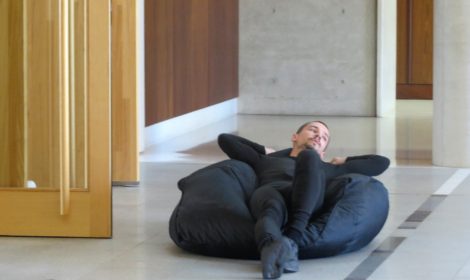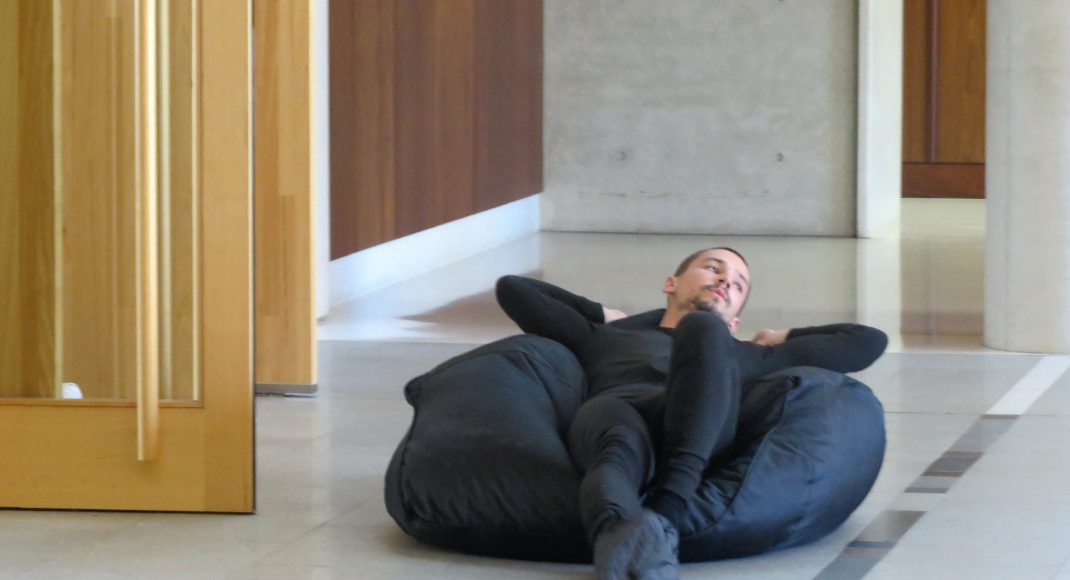5 November 2016, National Portrait Gallery, Canberra
James Batchelor never ceases to surprise with his new choreographies. Smooth translation, commissioned by the National Portrait Gallery and performed by Batchelor and visual artist and designer Madeline Beckett, was no exception. And, as is usual, it was only later that the thought behind the work became clear to me—or, perhaps better stated, that I was able to make a personal interpretation of the work.
Smooth translation began with a pile of bean bag-like items piled in a heap in a corner of Gordon Darling Hall at Canberra’s National Portrait Gallery. Slowly, from underneath the pile, human hands began to emerge, then legs and finally two bodies.

The bodies (now clearly Batchelor and Beckett) proceeded to manipulate the bean bags in various ways.
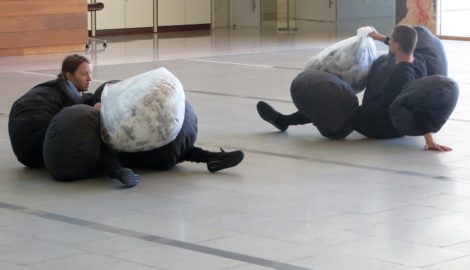
There was one moment, too, when the two performers left the bean bags and strode purposefully out of the performing space via the exit doors and onto the paved entrance area. They kept going, to the surprise of the audience, who wondered whether the show was in fact over. Well it wasn’t, and on reaching the end of the entrance plaza they turned around and, just as purposefully, marched back into Gordon Darling Hall.
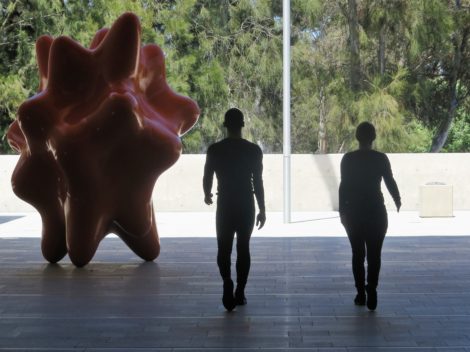
Later they carefully emptied pebbles out of small bags onto a long sheet of clear plastic.
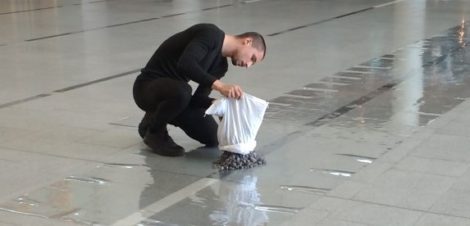
And so it went on with a series of mysterious but absorbing actions.
So what was Smooth translation about? In his notes, Batchelor acknowledges the British sculptor Barbara Hepworth as inspiration and remarks that the work ‘examines carving as an entry point to the interiority of matter. It is a choreography of sculpting, building and forming a landscape, a moment of translation from one body to another.’ As has so often happened for me when I encounter Batchelor’s work, I wondered what the words meant and how the actions related to those words. But after a while thoughts came crowding in. I loved the idea that a a work of art, and the ideas for such a work, were emerging in the opening scene. I loved the thoughtful traversing of the room by the two performers, while lying back in the bean bags as if pondering how to develop the work. I loved those moments when Batchelor and Beckett seemed to be measuring the space and objects in Gordon Darling Hall as if deciding on how large the work in progress should be. I loved the exit from the performing space as if they had decided it was all too hard, only to return to complete it. And so on.
There is not doubt that Batchelor has a deeply intellectual approach to choreography. And such an approach may not be to everyone’s liking especially when it isn’t immediately apparent what is going on! But personally I love being able to ponder and Batchelor always gives me the opportunity to do so. His work allows the construction of a narrative around the choreography, whether or not such as narrative was the intention of the choreographer or not.
Michelle Potter, 6 November 2016
Featured image: James Batchelor moves around Gordon Darling Hall in Smooth translation
All photos: © Michelle Potter
